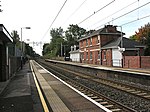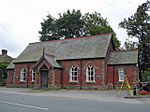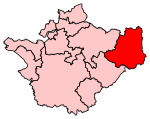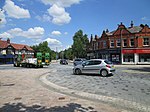Macclesfield Rural District
Cheshire geography stubsDistricts of England abolished by the Local Government Act 1972Districts of England created by the Local Government Act 1894Former districts of CheshireHistory of Cheshire ... and 2 more
Rural districts of EnglandUse British English from August 2012

Macclesfield Rural District was a rural district of Cheshire, England from 1894 to 1974. Macclesfield as a Municipal Borough and Bollington as an urban district formed an enclave which was surrounded by Macclesfield RD. The district was formed in 1894 based on Macclesfield rural sanitary district by the Local Government Act 1894. It was abolished under the Local Government Act 1972 in 1974 and became part of the new Macclesfield borough, which was itself abolished in 2009.
Excerpt from the Wikipedia article Macclesfield Rural District (License: CC BY-SA 3.0, Authors, Images).Macclesfield Rural District
London Road,
Geographical coordinates (GPS) Address Nearby Places Show on map
Geographical coordinates (GPS)
| Latitude | Longitude |
|---|---|
| N 53.333333333333 ° | E -2.1333333333333 ° |
Address
London Road
London Road
SK10 4NL , Adlington
England, United Kingdom
Open on Google Maps









